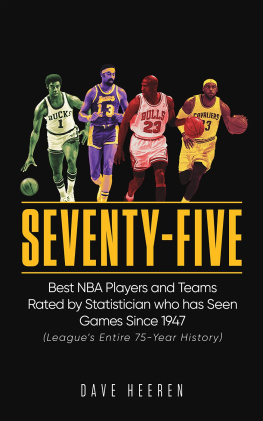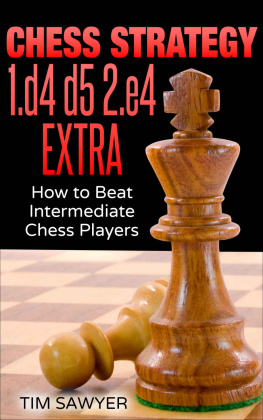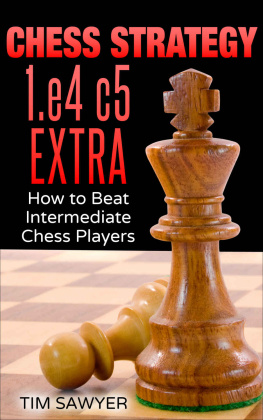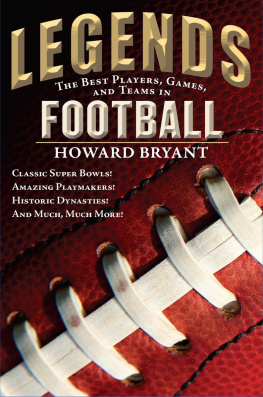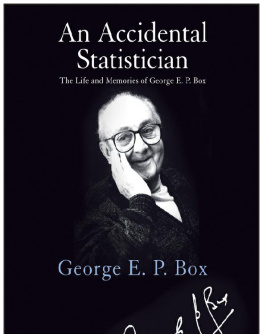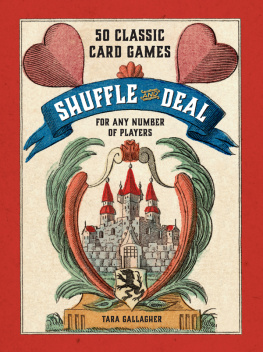Dave Heeren - Seventy-Five: Best NBA Players and Teams Rated by Statistician who has Seen Games Since 1947
Here you can read online Dave Heeren - Seventy-Five: Best NBA Players and Teams Rated by Statistician who has Seen Games Since 1947 full text of the book (entire story) in english for free. Download pdf and epub, get meaning, cover and reviews about this ebook. year: 2021, publisher: URLink Print & Media, LLC, genre: Detective and thriller. Description of the work, (preface) as well as reviews are available. Best literature library LitArk.com created for fans of good reading and offers a wide selection of genres:
Romance novel
Science fiction
Adventure
Detective
Science
History
Home and family
Prose
Art
Politics
Computer
Non-fiction
Religion
Business
Children
Humor
Choose a favorite category and find really read worthwhile books. Enjoy immersion in the world of imagination, feel the emotions of the characters or learn something new for yourself, make an fascinating discovery.
- Book:Seventy-Five: Best NBA Players and Teams Rated by Statistician who has Seen Games Since 1947
- Author:
- Publisher:URLink Print & Media, LLC
- Genre:
- Year:2021
- Rating:3 / 5
- Favourites:Add to favourites
- Your mark:
- 60
- 1
- 2
- 3
- 4
- 5
Seventy-Five: Best NBA Players and Teams Rated by Statistician who has Seen Games Since 1947: summary, description and annotation
We offer to read an annotation, description, summary or preface (depends on what the author of the book "Seventy-Five: Best NBA Players and Teams Rated by Statistician who has Seen Games Since 1947" wrote himself). If you haven't found the necessary information about the book — write in the comments, we will try to find it.
Dave Heeren: author's other books
Who wrote Seventy-Five: Best NBA Players and Teams Rated by Statistician who has Seen Games Since 1947? Find out the surname, the name of the author of the book and a list of all author's works by series.
Seventy-Five: Best NBA Players and Teams Rated by Statistician who has Seen Games Since 1947 — read online for free the complete book (whole text) full work
Below is the text of the book, divided by pages. System saving the place of the last page read, allows you to conveniently read the book "Seventy-Five: Best NBA Players and Teams Rated by Statistician who has Seen Games Since 1947" online for free, without having to search again every time where you left off. Put a bookmark, and you can go to the page where you finished reading at any time.
Font size:
Interval:
Bookmark:
SEVENTY-FIVE
Best NBA Players and Teams
Rated by Statistician who has Seen
Games Since 1947
(Leagues entire 75-year history)
DAVE HEEREN

Seventy-Five
Copyright 2021 by David S. Heeren. All rights reserved.
No part of this publication may be reproduced, stored in a retrieval system or transmitted in any way by any means, electronic, mechanical, photocopy, recording or otherwise without the prior permission of the author except as provided by USA copyright law.
The opinions expressed by the author are not necessarily those of URLink Print and Media.
1603 Capitol Ave., Suite 310 Cheyenne, Wyoming USA 82001
1-888-980-6523 |
URLink Print and Media is committed to excellence in the publishing industry.
Book design copyright 2021 by URLink Print and Media . All rights reserved.
Published in the United States of America
Library of Congress Control Number: 2021922433
ISBN 978-1-68486-026-5 (Paperback)
ISBN 978-1-68486-046-3 (Digital)
21.10.21
CONTENTS
A Personal Look at NBA His tory
The Fabulous Four some
Greatest NBA Team: Surp rise!
Call them the Shoot ists
PAR for the Playma kers
The Surprising Reboun ders
Defense: The Three Rs
Underrated and Overr ated
Durability and Tena city
Versatility and Athleti cism
Most Amazing Fact about NBA Sc outs
Filling in the Bl anks
AUTHORS PREFACE
This book was written because its author attended NBA games during every one of the leagues 75 seasons and created most of the statistical concepts in use by the league to this day.
The first TENDEX formula came into being in 1958. By that time, at the age of 19, I had become an NBA fan, attending New York Knicks games every winter at Madison Square Ga rden.
Before the 1961-62 NBA season, the Knicks hired me and early that season chose me as the team statistician. TENDEX often received attention from one of the four greatest players of all-time, Wilt Chamberlain. I remember how flattering it was to have Wilt looking over my shoulder and asking questions about his TENDEX s tats.
Much later, from out of nowhere, in 2003, I received a phone call inviting me to a meeting with publishers working on a new basketball encyclop edia.
I attended the two-day event, and I believe the rejection at that meeting of my prime TENDEX formula and replacing it with a deficient formula (an outdated version of TENDEX) was the No. 1 reason for the encyclopedias failure to find favor with many NBA fans.
Lets say Im a big NBA fan picking up this encyclopedia in 2003 at a store during the same year as Michael Jordans third and final retire ment.
Chances are that I am going to look first at the stats of Jordan, the most popular player of his era. And I am going to put it right back down again, probably with an angry leer, when I learn that Jordan was not rated Player of the Year a single time in the encyclopedias year-by-year data base.
I am glad that I did not tell the encyclopedias editor that the database chosen for the encyclopedia was based on a TENDEX formula. It was the only deficient formula among the two-dozen in my system. If I had told him, he might have mentioned TENDEX in the encyclopedia and I would have joined the encyclopedias publishing staff as targets of Jordan fan ire.
The faulty TENDEX formula omitted the important divisor for positional rating and has not been used in any of my basketball books. Centers, forwards and point guards always, on average, rate higher than shooting guards. It was possible (and happened eight times) for the greatest shooting guard (Jordan) to lose out in the Player of the Year ratings to players less dominant at other positions, according to the deficient formula used in the encyclopedia. TENDEX actually honored the great Jordan three more times than his NBA contemporaries, who picked him five times as MVP.
Statistics, unlike book texts, could not be protected by copyright, and so the thievery was rampant. Bob Bellotti was the only statistician I am aware of at that time who didnt try to borrow stats from me, change them a tad and pretend he was the originator. Bellotti telephoned to ask permission for using the TENDEX formula he knew I didnt like and persuaded the editor that it should be used in the encyclopedia. I liked his candor and the fact that he wasnt one of the thi eves.
There was a lot of plagiarism of TENDEX going on. It started with the stat systems initial national exposure via The Sporting News and a basketball magazine in the 1980s. This was followed by a series of five annual Basketball Abstract books. So much of what I wrote was published by nationwide sources that it was no problem for would-be plagiarists to rewrite my words and copy my s tats.
Once, a borrower didnt even bother to rewrite. He just reprinted a segment of text that I had written. But, somehow, the thieves always seemed to foul up even worse than the single errant TENDEX formula because they just didnt understand basic statistical conc epts.
With a sportswriter/friend, John Harris, we produced an annual TENDEX Draft Report which, during 30 seasons of computations from 1984 through 2013, showed TENDEX to be superior to NBA scouts by a ratio of five players (TENDEX winners) to three (winners for the scouts) ove rall.
For example, the scouts placed Jordan only No. 3 in the 1984 draft when he was the TENDEX decisive No. 1. TENDEX outdid the scouts on more than two-thirds of the super-elite players drafted during those years, including a perfect record (100%) for the first five players in the Jordan d raft.
The better the players, the better TENDEX was at rating them. NBA scouts were earning millions of dollars when, for a few dollars, any fan (or NBA executive) could pick up draft ratings more accurate than those of the scouts by spending a few dollars for a TENDEX draft re port..
By that time, TENDEX was being used, not only on the official NBA website, without being acknowledged as TENDEX, but also officially by the top professional leagues in Europe and Australia. They did credit TE NDEX.
Some of them made changes in their versions of the TENDEX formulae. A European statistician told me, I think it was in the year 2000, that he was cutting in half the statistical significance of free-throw percentage in his version of TENDEX in an effort to protect Shaquille ONeal, who was a horrible free-throw sho oter.
I replied: Why does the best player in the world need your protec tion?
But even Shaq does not measure up statistically to any of the elite TENDEX foursome consisting of Jordan, Chamberlain, Oscar Robertson and LeBron James. The four are close enough by the numbers so that you can make an argument for any one of them.
Dave He eren
A PERSONAL LOOK AT NBA HISTORY
It was the early days of my first job after university graduation. In January of 1962, I was sitting at my desk in New York Citys Madison Square Garden studying basketball statistics when I became aware of a large person standing behin d me.
Are you rating the players? They told me its what you do.A huge hand reached out with index finger pointing at a row of Philadelphia Warriors statistics on the page in front of me. Whats my ra ting?
I noticed that the finger was pointing at the line of statistics belonging to Wilt Chamberlain, whose team would be playing that night in the Garden against the New York Knicks. At age 23, I was on salary with the Knicks to do what I most enjoyed: Statistical tabulations for the team.
I looked up and made eye contact with Chamberlain, who at that moment became the first NBA superstar to make my acquaint ance.
Next pageFont size:
Interval:
Bookmark:
Similar books «Seventy-Five: Best NBA Players and Teams Rated by Statistician who has Seen Games Since 1947»
Look at similar books to Seventy-Five: Best NBA Players and Teams Rated by Statistician who has Seen Games Since 1947. We have selected literature similar in name and meaning in the hope of providing readers with more options to find new, interesting, not yet read works.
Discussion, reviews of the book Seventy-Five: Best NBA Players and Teams Rated by Statistician who has Seen Games Since 1947 and just readers' own opinions. Leave your comments, write what you think about the work, its meaning or the main characters. Specify what exactly you liked and what you didn't like, and why you think so.

